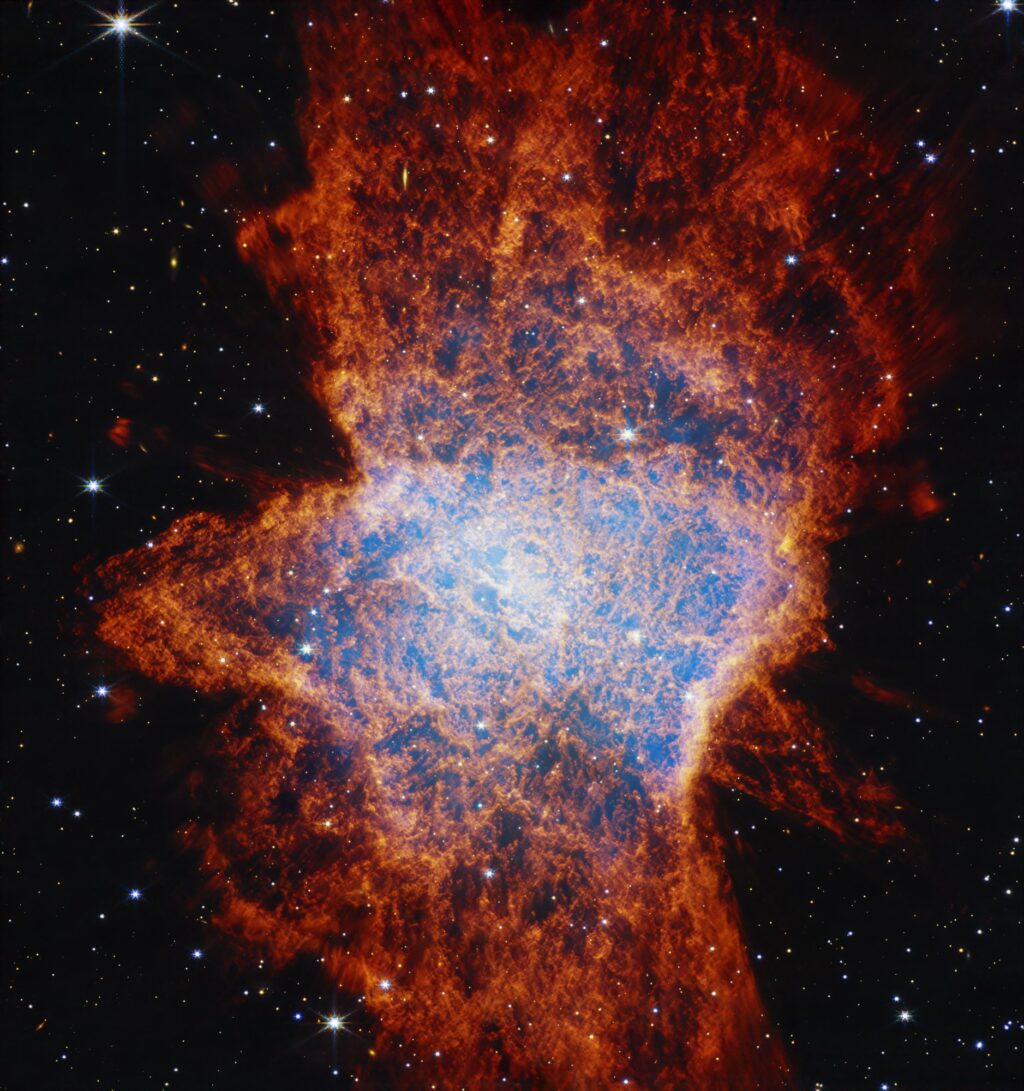
The James Webb Space Telescope (JWST) has captured remarkable high-resolution images of the NGC 6072 nebula, located approximately 3,060 light-years away in the southern constellation of Scorpius. These images reveal intricate details that could enhance our understanding of star lifecycles and the processes involved in the formation of planetary nebulae.
Planetary nebulae are created when low-mass stars reach the end of their main-sequence phase and expel clouds of gas. This phenomenon has fascinated astronomers since the late 1700s, with nebulae typically exhibiting circular, elliptical, or bipolar shapes. NGC 6072, however, deviates from these common forms, presenting a complex structure that suggests more intricate dynamics at play.
Utilizing both the Near-Infrared Camera (NIRCam) and the Mid-Infrared Instrument (MIRI), astronomers observed that NGC 6072’s core appears to be a vibrant hot region, glowing in light blue, surrounded by intricate elliptical outflows. This configuration hints at a multi-polar arrangement, where two prominent lobes of gas and dust cross at nearly vertical angles, while a third extends horizontally, forming an equatorial plane.
The data from NIRCam illustrates a significant area filled with dark pockets, which are surrounded by orange material that gradually transitions to red further from the core. This color change aligns with the cooling process of gas and dust as it moves away from the star’s hot center. Researchers propose that the three-lobe structure may indicate the presence of at least two stars at the nebula’s center, suggesting a younger companion star accompanying an aging star that has lost a substantial amount of material.
MIRI’s observations provide additional insights, capturing longer-wavelength infrared data that emphasizes the web-like formations created by the outflows of dust. Within this framework, a star, appearing as a pinkish-white dot, is identified as potentially central to the nebula. Concentric rings can also be seen expanding from the core to the edges of the lobes, possibly signifying a secondary star orbiting the older one and generating these distinct structures. Alternatively, these rings may result from pulsations in the outflows, where gas and dust are expelled in intervals of approximately one thousand years.
The images reveal a complex interplay between cool gas, likely molecular hydrogen, and hot ionized gas in the central regions of the nebula. As the central star cools over time, the nebula is expected to dissipate into the interstellar medium (ISM), contributing heavy elements that will play a role in the formation of new stars and planetary systems.
The study of planetary nebulae is a key objective for the James Webb Space Telescope, which aims to provide new insights into stellar lifecycles and their broader environmental impacts. Understanding these phenomena could also offer clues about the eventual fate of our own Sun, set to undergo a similar transformation billions of years in the future.







